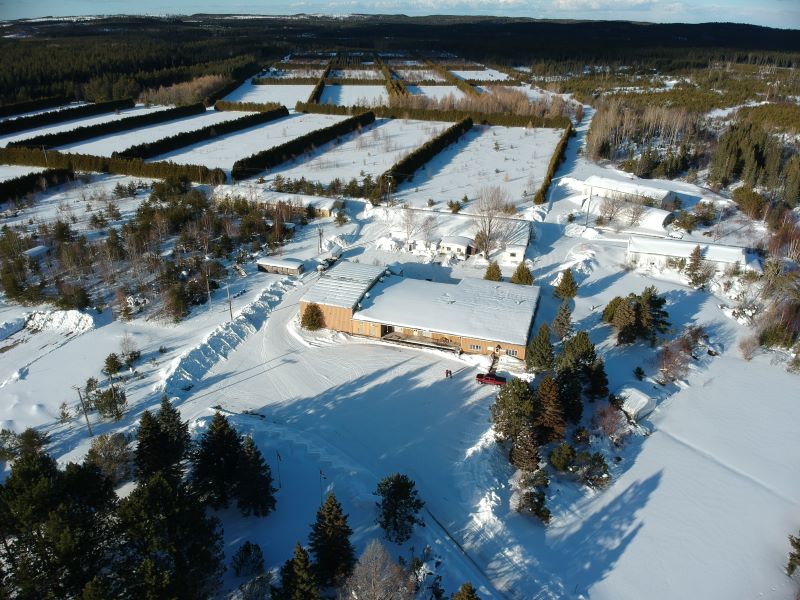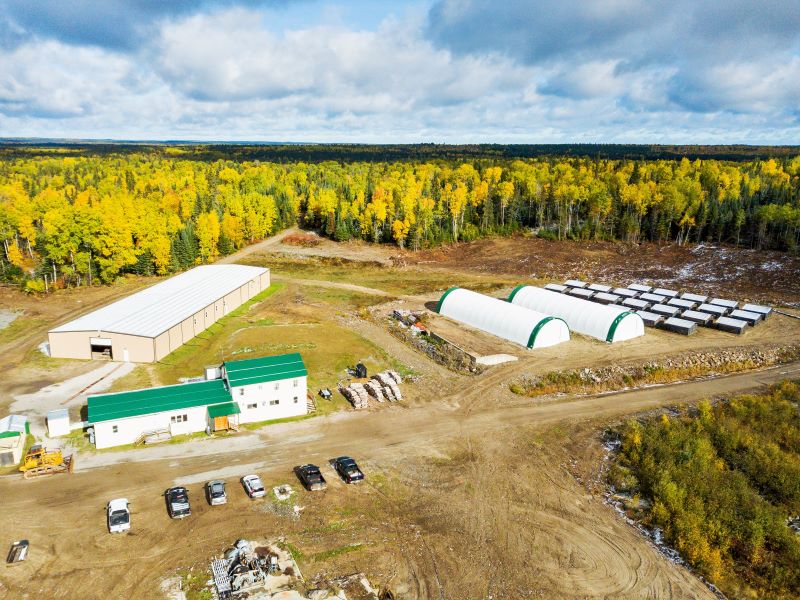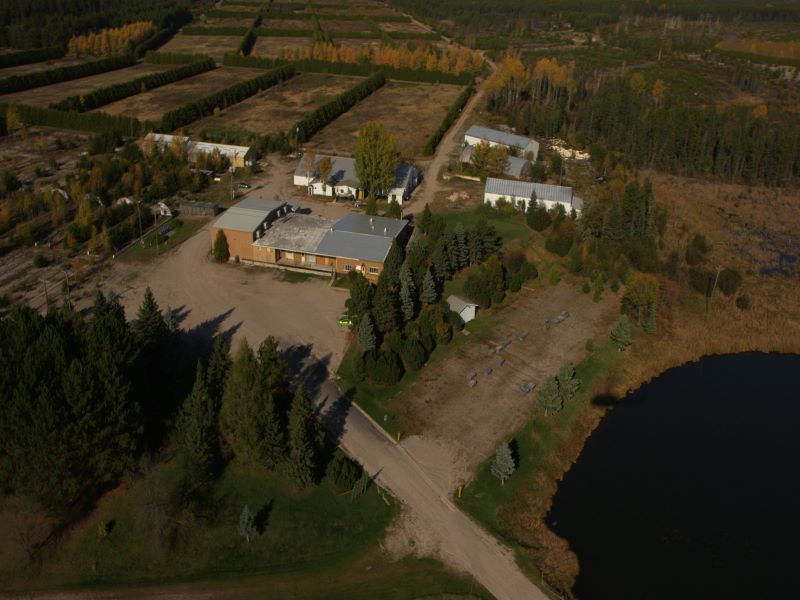The Goliath Gold Complex is a mining project proposed to be developed in north-western Ontario, Canada, by mineral exploration and development company Treasury Metals.
The complex comprises three deposits, namely Goliath, Goldlund and Miller, which are located on different land packages. A pre-feasibility study (PFS) for the Goliath Gold Complex project was completed in February 2023. The project is estimated to require an initial capital expenditure of C$335m ($248m).
The PFS indicated an annual average production capacity of 90,000oz of gold over the project’s 13-year lifespan.
Location and geology of the Goliath Gold Complex
The project is located around 5km north of the village of Wabigoon in the Kenora Mining Division in north-western Ontario. The Goliath property is located 20km east of the city of Dryden. The Goldlund and Miller deposits are located 25km and 35km north-east of the Goliath gold project, respectively.
The Goliath property covers an area of 7,601ha of mineral and surface rights; of these, the mineral rights cover 7,511ha. The Goldlund-Miller property encompasses 27,118ha of mineral rights.
The Goliath Gold Complex is situated in the Archean Eagle-Wabigoon-Manitou greenstone belt in the Wabigoon subprovince.
The most significant gold concentration in the Goliath deposit is hosted in intensely deformed and variably altered, fine to medium-grained, quartz-feldspar-sericite schist and biotite-quartz-feldspar-sericite schist with minor metasedimentary rocks.
Mineralisation and reserves at the Goliath project
The mineralisation at Goliath is defined as a hybrid deposit-type model, also known as a Pre-orogenic Atypical Greenstone Belt gold model.
Gold mineralisation at the deposit is concentrated in a central unit that comprises intensely altered felsic metavolcanic rocks with minor argillaceous metasedimentary rocks. Higher-grade gold within the central unit is found in a pyritic alteration zone.
Gold mineralisation at the Goldlund and Miller deposits occurs in north-east-trending and north-west-dipping quartz stockworks comprising numerous quartz veinlets.
As of February 2023, the Goliath Gold Complex’s proven and probable mineral reserves were estimated at 30.3 million tonnes (Mt), grading 1.3g/t gold and 1.77g/t silver.
Mining operations at the Goliath Gold Complex
The Goliath deposit will be developed as open-pit and underground mine, while the Goldlund and Miller deposits are proposed to be operated as open-pit mines.
Conventional open-pit methods of drill, blast, load, and haul will be utilised. A 11m³ and two 6m³ excavators will undertake loading operations on 10m benches with 63t haul trucks in the pit.
Open-pit operations will first begin at the Goliath mine with one year of pre-production and two years of production. The Goldlund deposit is expected to start producing in year two and continue until year seven, while the final three stages of Goliath are planned to be mined between years seven and nine. Mining at the Miller deposit will take place between years eight and nine. Open-pit operations at the complex are expected to cease in year nine. Low-grade stockpiles from Goliath and Goldlund will be used to feed the plant until the end of mine life.
The long hole open stoping (LHOS) method will be used for underground mining following a longitudinal retreat approach, with a bottom-up stope sequence. Underground mining will begin after the start of open-pit operations at Goliath, with the first ore from the underground operation expected in year one and sustained commercial production to be achieved in year three.
Processing at the Goliath Gold Complex
The processing facility at the Goliath Gold Complex will be located at Goliath, with ore feed from Goldlund and Miller to be hauled to the facility by trucks. The processing plant will have an output capacity of 6,460 tonnes a day or 2.36 million tonnes a year.
The run-of-mine ore will be crushed in a primary jaw crusher and a secondary cone crusher before being stockpiled. The crushed ore will pass through a semi-autogenous mill followed by a closed-circuit ball mill with hydro-cyclone classification. The gravity circuit will include a scalping screen and a centrifugal batch concentrator.
Undersize from the scalping screen will be sent to the centrifugal concentrator and the resultant concentrate will be leached in an intensive cyanidation reactor circuit. The cyclone feed pump box will be fed by recirculated scalping screen oversize, gravity concentrator tailings, and the intensive cyanidation reactor tailings.
The cyclone overflow will be thickened in a high-rate pre-leach thickener before being fed to the leach and carbon-in-leach (CIL) circuit with a final grind size of 80% passing 85µm.
The CIL circuit will adsorb gold and silver, which will be recovered onto activated carbon. The recovered gold and silver will undergo elution using an Anglo American Research Laboratory (AARL) carbon elution circuit, followed by electrowinning in the gold room. The resultant gold and silver sludge will be dried in an oven and mixed with fluxes, then smelted in a furnace to produce gold doré bars.
Storage of tailings at the Goliath Gold Complex
The tails slurry from the CIL will be treated using the sulphur dioxide/oxygen (SO2/O2) air process to destroy the cyanide. The treated slurry will be transferred to a final tailings thickener. The underflow from the thickener will be pumped to the tailings storage facility (TSF), while the overflow will be sent to the process water area.
The tailings management design incorporates an on-site, 18.5Mt TSF for thickened non-segregating tailings and a 9.4Mt, storage for in-pit tailings within the exhausted Goliath pit.
Any remaining tailings will be used for site reclamation and paste backfill for the underground mine.
Contractors involved in the project
Ausenco Engineering Canada, a subsidiary of consulting and engineering firm Ausenco, prepared the PFS for the project. The company was also responsible for estimating the processing costs. In addition, it prepared the preliminary economic assessment (PEA) and provided the design and cost estimate for the process plant and general site infrastructure, as part of the PEA.
SLR Consulting (Canada) was responsible for the tailings management design, while SRK Consulting (Canada) provided mine operating costs and mineral reserve estimates as part of the PFS. Minnow Environmental, WSP Canada and Stantec also served as consultants for the PFS.
AGP Mining Consultants, an independent mine engineering firm based in Canada, was appointed to complete the mineral resource estimate for the Goliath and Miller projects as part of the PEA. The company also provided the design for the open-pit and underground mine plan, mine capital, and operating cost estimates, as well as the mine production schedule.
CGK Consulting Services was contracted to complete the mineral resource estimate for the Goldlund project as part of the PEA. Global consulting firm Knight-Piésold prepared the PEA-level design and cost estimate for the TSF, as well as the site water management infrastructure of the Goliath gold complex.





